Understanding the Cross with Dots Symbol Meaning
The cross with dots symbol is a historically rich and culturally diverse icon. It dates back to ancient Mesopotamia around 2000 BCE and is seen in Mesoamerican, Egyptian, Celtic, and Asian traditions.
Historically, it has represented deities, celestial cycles, and sacredness. Spiritually, the cross signifies the intersection of the physical and divine, with dots marking focal points of spiritual energy.
Artistically, it has appeared in artifacts, amulets, and mandalas, embodying cosmic balance and eternity. Today, it is used in modern art, digital design, and spiritual practices, symbolizing interconnectedness and higher consciousness.
To uncover its full depth across cultures and epochs, further exploration is essential.
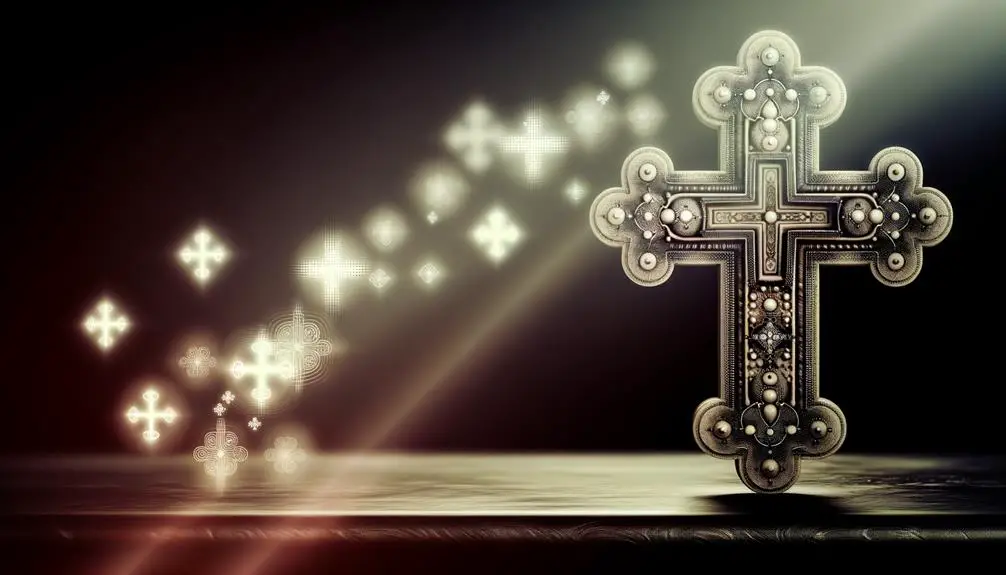
Key Takeaways
- Represents the intersection of physical and divine realms, with dots symbolizing spiritual energy points.
- Found in ancient civilizations, linked to deities and cosmological diagrams in Mesopotamia and Mesoamerica.
- Signifies sacredness and eternity in various cultures, including Celtic, medieval European, and Asian traditions.
- Used in modern art, digital design, and tattoos for its balance, interconnectedness, and geometric simplicity.
- Functions as a meditation tool in spiritual practices, guiding the soul toward higher consciousness.
Historical Origins
The historical origins of the cross with dots symbol can be traced back to ancient civilizations, where it held significant cultural and spiritual meanings. Archaeological evidence indicates that this symbol appeared in Mesopotamian artifacts around 2000 BCE, often associated with deities and cosmological diagrams.
Similar motifs emerged in Mesoamerican cultures, such as the Maya, where they represented celestial cycles and divine protection. In ancient Egypt, the cross with dots was inscribed on amulets, believed to harness protective magic.
The symbol's recurrence across disparate cultures suggests a shared human inclination to represent complex metaphysical concepts through simple geometric forms. These early uses underscore the symbol's profound resonance, setting the stage for its later adaptations in various religious and philosophical traditions.
Cultural Significance
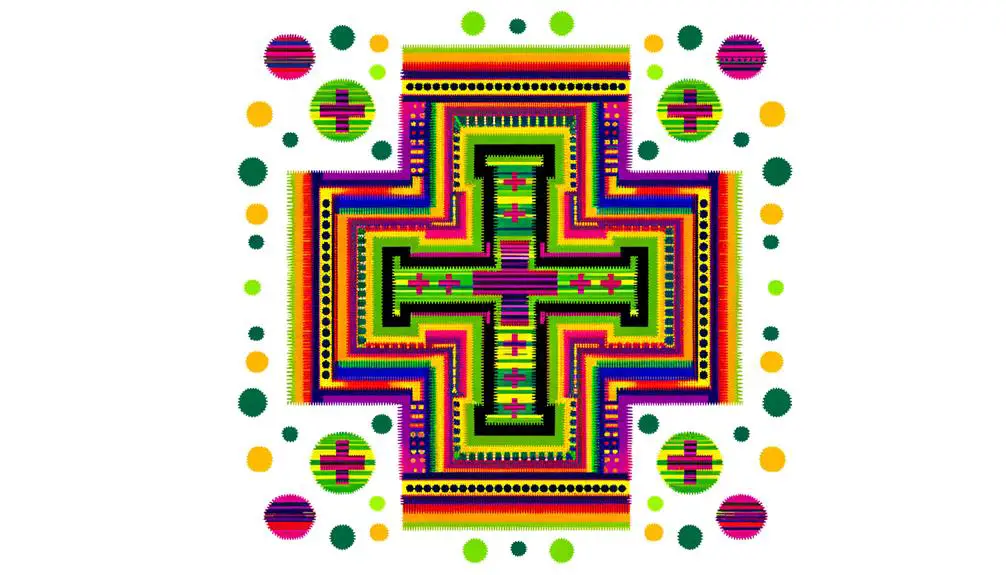
Throughout history, the cross with dots symbol has embodied diverse cultural significances, encompassing religious devotion, societal values, and artistic expression across various civilizations.
In ancient Mesoamerica, this symbol often represented the intersection of the cosmos and earthly domains, with dots signifying stars or deities.
In Celtic cultures, the cross with dots was integral to intricate knotwork, symbolizing eternity and interconnectedness.
Medieval European art incorporated the motif in illuminated manuscripts, where it denoted sacredness and divine protection.
In Asian traditions, the symbol appeared in mandalas and sacred geometry, reflecting balance and cosmic order.
Across these varied contexts, the cross with dots continually served as a powerful visual language, communicating profound cultural narratives and collective identities.
Spiritual Interpretations
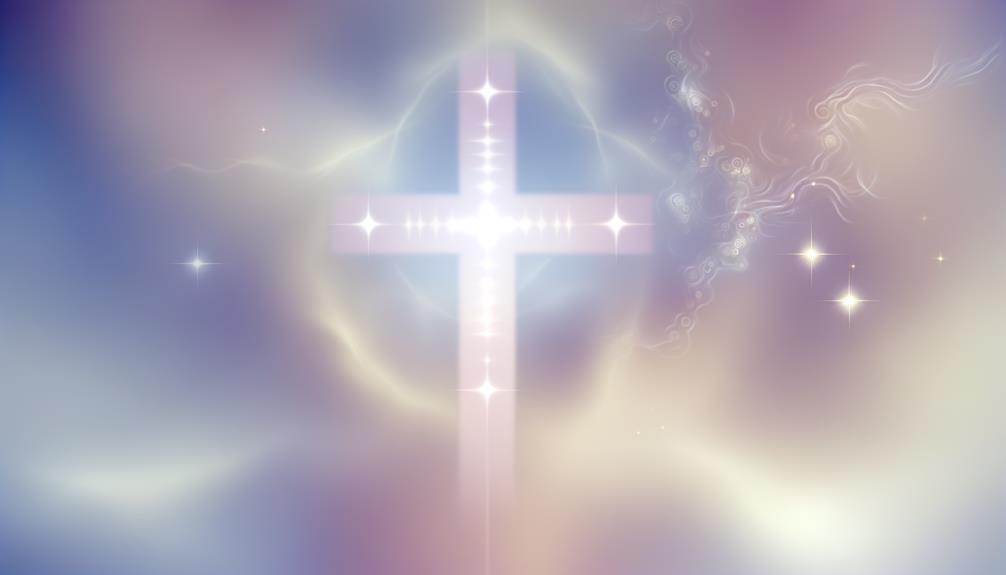
Rooted in ancient symbolism and profound esoteric traditions, the cross with dots has been interpreted spiritually as a conduit for connecting the material and metaphysical domains.
Historically, the cross symbolizes the intersection of the physical world and the divine domain, while the dots often represent focal points of spiritual energy or enlightenment.
This symbol has been prevalent in various mystic traditions, including Gnosticism and alchemy, where it is seen as a map guiding the soul towards higher consciousness. The dots can signify moments of spiritual awakening or divine intervention, emphasizing the interconnectedness of all existence.
Hence, this symbol encapsulates the journey of the soul through the physical plane towards spiritual transcendence, offering a visual representation of profound metaphysical truths.
Artistic Representations
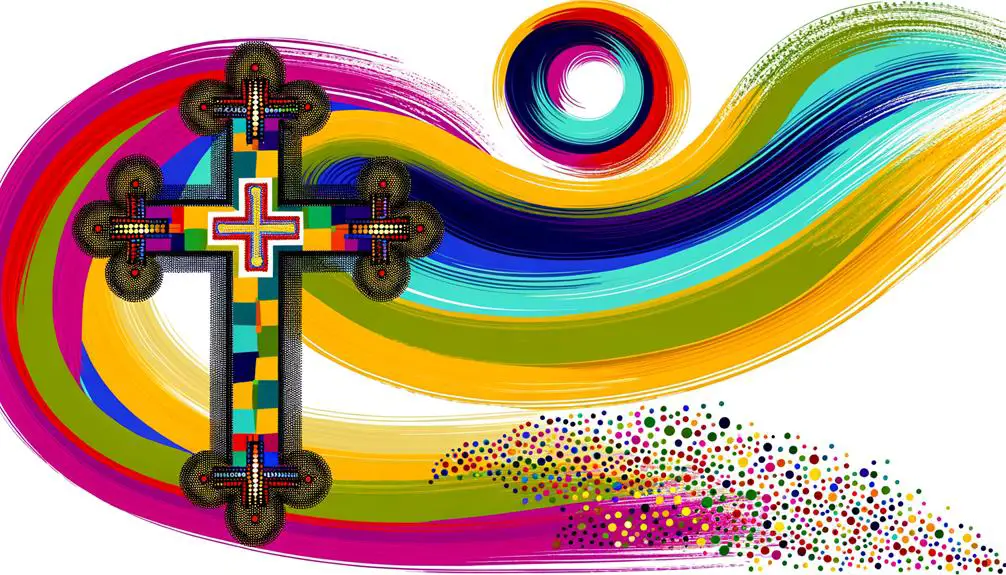
In artistic representations, the cross with dots symbol has been depicted across various cultures and epochs, reflecting its deep-seated significance and multifaceted interpretations.
In ancient Mesopotamia, it appeared in cuneiform tablets, often signifying divinity or celestial bodies.
Medieval European manuscripts utilized the symbol in illuminated texts, blending Christian iconography with alchemical symbolism.
Indigenous Australian art also incorporates the cross with dots, representing sacred sites or ancestral pathways.
The Renaissance saw the symbol in esoteric contexts, where it was linked to mystical traditions and hidden knowledge.
Each artistic manifestation of the cross with dots offers a window into the cultural and historical milieu that shaped its usage, demonstrating the symbol's enduring resonance and adaptability across human civilization.
Modern Uses
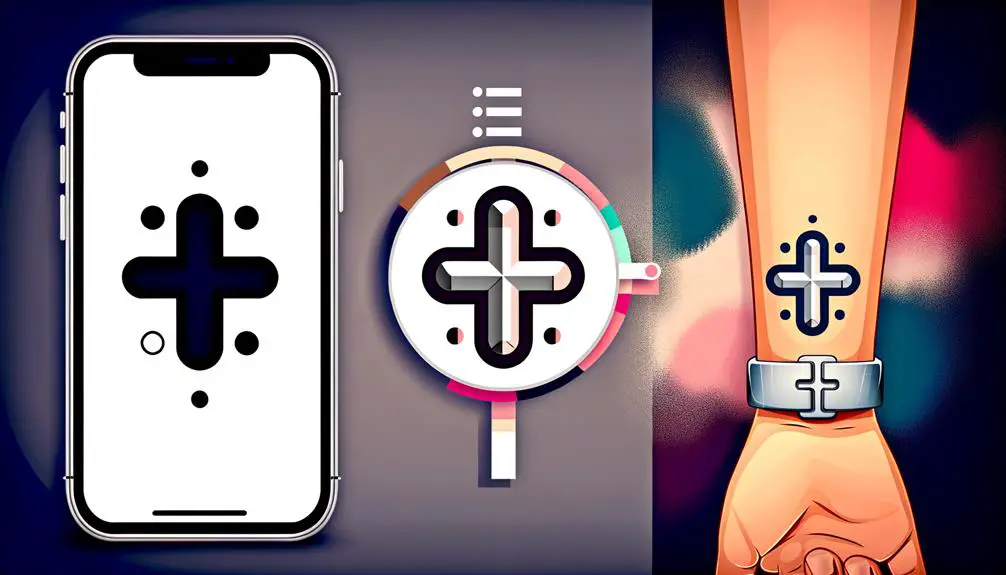
The cross with dots symbol continues to manifest in contemporary contexts, often appearing in modern art, digital design, and spiritual practices, each application reflecting its historical depth and evolving significance.
In modern art, this symbol is utilized to convey themes of balance and interconnectedness.
Digital design employs it for its geometric simplicity and visual appeal.
Spiritual practices integrate the symbol as a focus for meditation and mindfulness. The symbol's versatility underscores its enduring relevance.
Here are four modern uses:
- Graphic Design: Employed in logos and branding for its minimalist aesthetic.
- Tattoo Art: Represents personal beliefs and spiritual journeys.
- Meditation Tools: Used on mandalas and other spiritual diagrams.
- Fashion: Incorporated into jewelry and clothing designs for its symbolic resonance.
Conclusion
The cross with dots symbol, steeped in historical origins and cultural significance, serves as a multifaceted emblem in spiritual, artistic, and modern contexts.
Like a tapestry woven with threads of meaning, this symbol encapsulates diverse interpretations, from ancient spiritual rituals to contemporary artistic expressions.
Its enduring presence underscores a rich legacy, demonstrating the intricate interplay between tradition and modernity.
Consequently, the cross with dots remains a potent symbol, resonating through the annals of time.





